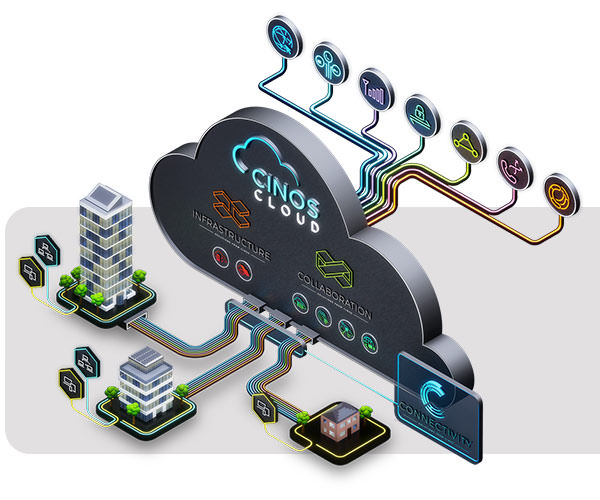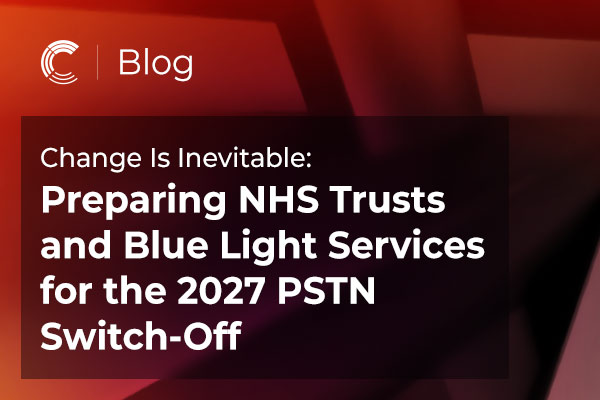
A Smarter Approach to NHS Cloud Telephony
April 16th, 2025
In 2013 the UK Government released its Cloud First Policy stating that public sector organisations should evaluate cloud solutions first before considering any other option.
The Allure of Off-the-Shelf Cloud Platforms
In the years since, cloud telephony has become a key consideration often promoted with promises of being ‘quick to deploy’, ‘easy to manage’, ‘simple to configure’ and offering ‘greater control’. On the surface it all sounds incredibly straightforward – create an account, pick a phone number and you’re ready to make calls. For many organisations, particularly those in the private sector with remote or hybrid workforces, these off-the-shelf platforms appear to tick all the boxes while reducing the reliance on complex on-premise systems and the associated maintenance overhead.
The Reality for the NHS: Beyond Basic Communication
But do these benefits extend to more complex environments such as the NHS? In healthcare, telephony isn’t just a business tool, it is a critical component in delivering patient care and, in some cases, saving lives. These environments demand far more than those in the corporate world; they require advanced call routing, integration with existing systems, robust security and unwavering reliability.

Limitations of a Multitenant Cloud Approach
Off-the-shelf cloud unified communications platforms are typically shared, multitenant solutions, meaning multiple organisations use the same core infrastructure and software instance, but are in logically separate environments. While this model offers scalability and cost efficiency, for NHS Trusts, it introduces significant limitations. Customisation is often restricted, compliance and data residency can become concerns and one-size-fits-all limitations mean the platform my struggle to accommodate complex call flows that go far beyond standard business use cases.
An alternative approach to off-the-shelf platforms is to adopt a private or hybrid cloud model. These still leverage the flexibility and scalability of off-the-shelf cloud platforms, but also support tailored configurations, integrations with legacy equipment and enhanced control over call and data routing.
But why does this matter?
Why Flexibility and Control Are Essential for NHS Cloud Services
This distinction is particularly important for organisations with specialist requirements—such as emergency services or healthcare providers—where flexibility and control are not just nice-to-haves, but essential for maintaining critical operations.
In these environments, migrating to the cloud requires more than just replacing infrastructure. It demands a holistic view of all systems that rely on telephony, whether it’s paging systems, contact centres, or clinical applications. Furthermore, a successful migration isn’t just about changing infrastructure; it’s about ensuring continuity. This is where careful planning and platform flexibility become critical to ensure the userbase can communicate with each other whilst the migration is happening.
Reliability and Resilience Are Non-Negotiable in Healthcare
Reliability is another fundamental requirement when going to market. For healthcare organisations, nothing less than 99.999% uptime should be considered. Additional capabilities such as Red Phone support are essential to ensure that key phones across the hospital remain operational without reliance on power or network connectivity. This level of resilience is vital to ensure those all-important 2222 calls can still be completed and crash teams mobilised regardless of any localised incident on site. These crash calls often rely on a pager system being integrated to the telephony platform to relay the details to the crash teams. However, many of these paging solutions are often legacy platforms and even analogue-based, making them incompatible with traditional cloud solutions.

The Role of the Hospital Switchboard
The hospital switchboard should also be a key consideration. Often the lifeline of the hospital, the switchboard department handles a large volume of internal and external calls, manages emergency lines, mobilises crash teams and often coordinates clinical team rotas. A one-size-fits-all switchboard solution would have a huge negative impact on this department. In contrast, a private cloud solution would open up the options to either retain the current switchboard solution or adopt a purpose-built solution that meets the unique demands of a hospital environment.

Purpose-Built for Healthcare: Cinos Cloud for Healthcare
Our Cinos Cloud for Healthcare private cloud service is purpose-built for healthcare environments—offering a bespoke alternative to generic, off-the-shelf cloud platforms. It can be deployed as a standalone cloud service or as part of a hybrid cloud model for increased resilience. Additional options, such as Red Phone systems and MDT video integration can also be incorporated into our service to meet the complex needs of clinical and operational teams.
When considering a move to a cloud telephony within the NHS, the priority should be selecting a solution that is fit for purpose, not just one that promises to be ‘simple to deploy’ or ‘easy to manage’. The focus must remain on how the platform supports specific clinical workflows, the interoperability it offers with other critical systems, and whether it can accommodate the unique operational requirements of a healthcare environment. These considerations should form the foundation of any decision when selecting the right platform for such a unique and critical environment.
Get Started with Cinos Cloud for Healthcare
To find out how Cinos Cloud for Healthcare can support your organisation’s transition to a more resilient, flexible, and clinically aligned cloud telephony platform, get in touch with our team today.




